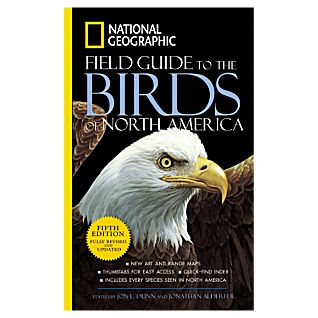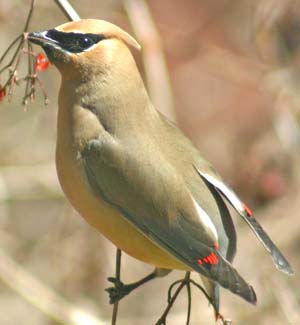
Birds are interesting creatures to study and look upon, thus here is a small guide to the identification process of birds:
The major tool that one can use to identify birds is the understanding of the body template of each. You all should know how a duck, sparrow, chicken, bird of prey look like. Do not forget to acquire a set of binoculars, since they are of a lot of help. Birds that are usually preyed are shyer, and will fly away when you approach them closely. As with the wildflowers, one must always have a local bird guide to help with the identification of each. Bird guides list the birds in the order of evolutionary existence, so birds are grouped together by their similar families. So if you encounter something that looks like a dove, you can easily find it in the section reserved for doves within your field guide. Another great tool to utilize is a list of local birds in the area in which you are, for example the Lubbock Lake Landmark offers a list of birds that can be identified within its property. It is easier for you to first refer to that list, since it narrows down the probabilities of a bird’s identity. If you are not able to find a birding list, then you can usually acquire this information within your field guide. Mine displays range maps next to each bird’s description. This is a lot of help, since sometimes the range of a bird is the solitary clue that reveals its identity. Birds are not like flowers, in which you have many variations of a species within an area or with specific characteristics (such as number of petals in a flower) to identify. Like I said before, you basically have to first identify what general category the bird falls into, then refer to that section of your field guide in order to utilize the range map, the specific characteristics you see on the bird, and the picture to pin point a birds identity.

Typical Bird Guide Range Map
So, as we did with wildflowers before lets practice with some pictures of birds. You are lucky since watching birds in the field may be hard at first. Sometimes a glimpse is all you get, so unlike with wildflowers, you have to be able to memorize the characteristics that make up that bird.
Here is our first picture:

http://alaska.fws.gov/mbsp/mbm/waterfowl/species/images/Ring-necked-Duck.jpg
In order to proper identify this bird you also need to know where you are when you see it, so here are some clues: You are in McKenzie Park in Lubbock, TX. It is mid-February. The bird is swimming in the lake in front of you. There are others of its kind around it, as well as other different species of birds.
Now that you have this basic information lets try to identify the bird. As you can clearly see, the bird is a duck. There is no doubt about it due to the fact that it has a heavy body, possibly webbed feet, the characteristic bill shape, and it is aquatic. If you look at your field guide, you notice that there are several families of ducks and geese to look at. However, here is a tip that I utilize with these kinds of specific looking ducks: a major distinction factor of this duck is the white ring found on its bill and also the white wings it possesses compared to its black body. These are really good distinction factors to utilize when looking through your bird guide. As you flip through the pages you may encounter several ducks that look alike. These are mostly found within the Pochards, which are diving ducks of the genus Arythya. The Ring necked duck, seems to be very familiar to the one in our picture, and if you look at its description you can see that one of its major characteristics is the “bold white ring near tip of bill.” Also its range is appropriate to the time of year in which it is usually encountered in Lubbock, in the winter. Congratulations you identified your first bird!!!
Here is a harder example:

This is one of my favorite birds. Location: Big Bend National Park, found along the Rio Grande. You see it darting out from a fixed perch to catch an insect. It is a smaller bird.
I do understand that my readers might not all be expert biologists, ornithologists, or birders but I include this difficult bird to teach you that birding is not really that complicated. You definitely know that this bird is not a duck, a hawk, or anything that you commonly see throughout your neighborhood. Look at the list of families and attempt to narrow it down to what you see. If you notice, the birds that might resemble this species are located within the end of your field guide, and not in the beginning where the bigger birds are located. The fact that it is an insect eater is a big clue, since this specialty narrows your look even more. Its pointy beak, its great eyes, and the fact that the size of its head is fairly large tell you that this is probably a specialist in insect catching, and thus my first guess will be that this is some kind of flycatcher. Now look through the flycatcher section. Concentrate on the pictures and range maps first. You will eventually note that the vermillion flycatcher matches the identity through both the description and range in which you have found it.
Here are some practice pictures. Post your answers as comments and see if they are right!

Location: your back yard in Lubbock, TX. It is winter, and the birds are perching on a tree. They are very noisy!

Location: Lubbock, TX. You are near a lake.

Location: Lubbock Lake Landmark. Hint! Look at the pattern in its chest!
No comments:
Post a Comment